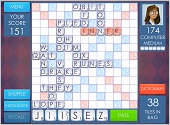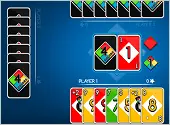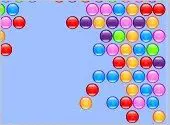- Home
- Better Memory
- Solving Unsolvable Problems
Use this Powerful Brain Hack to Solve Your Life's "Unsolvable" Problems
Frustrated by the tough problems life keeps throwing at you? Can't seem to find good answers for challenges at work, home, in relationships, or other aspects of your life?
Unleash the power of your hidden creative mind, which lies deep below the surface of your everyday thinking mind. There -- within -- you can often find the answers you seek.
This isn't some New Age mumbo-jumbo. It's backed by science.
Being stuck on a problem and unable to find a solution is agonizing. School children know this, but the adult world is full of such problems too.
How to handle the annoying co-worker -- How to fix the lawn mower so you don't have to pay a repairman - Whether this is a good time to take a vacation -- What clever birthday gift would make my spouse happy -- How to convince the client to purchase more of the product.
Small problems, big problems, these are life problems. And sometimes we just give up, throw up our hands, and in stuckness choose an unsatisfactory option or say I just don't know.
But whether you realize it or not, your brain is a deep well of wisdom. The secret to tapping into this part of your mind is to switch your brain from its normal "Focus" mode to deep "Creative" mode.
If you're like most people, your brain is in Focus mode most of the time. Focus mode is the surface mind. It is analytical, a compulsive stream of thought that rarely seems to rest. But it's not terribly creative.
By accessing the power of your creative mind, the quiet mind, you can activate your brain's full resources. Use the following two-step process to open your creative mind and find answers to your life's difficult problems on your own:
Step 1. With your brain in Focus mode, analyze and understand the problem;
Step 2. Switch your brain to Creative mode to discover the solution.
What may be new and unusual to you is Step 2, accessing Creative mode. Below I explain exactly how to do it, with examples.
Tap into your mind's deep wisdom -- the hidden part of the brain from which insight, originality, and creativity flow. And find a whole new source of answers.
Creative Mode - The Mental Magic
To untangle the trickiest problems and reveal the solution, you have to be able to enter Creative mode so thought can range widely through your brain and make new connections.
Some creative people, like renowned inventor Thomas Edison, are known to have taken light naps to help them enter creative mode. Although as you'll see below, going that deeply isn't always necessary.
Author Brian Weiss, in his book, Through Time Into Healing, describes Edison's problem-solving method this way:
"While sitting in a certain chair, Edison used relaxation and mediation techniques to reach the state of consciousness that is between sleep and wakefulness. He would hold some ball bearings in his closed hand, palm down, while resting this hand on the arm of his chair... If Edison fell asleep, his hand would open... and the noise would awaken him."
This day-dreaming state, where the focused mind is turned off, is highly creative. Weiss refers to this as the "hypnagogic" state:
Like hypnosis, the hypnagogic state is a deeply creative one. When we pass through it, the mind is completely turned inward and can access the inspiration of the subconscious.
The hypnagogic state is considered by many to be a "genius" state, without any boundaries or any limitations. When we are hypnagogic, we have access to all our resources and none of our self-imposed restrictions.
This state of non-thinking allowed Edison's Creative mode to come to the forefront. Just when Edison was about to fall asleep, the ball-bearings would fall out of his hand -- and he would know the answer to whichever problem he had set his mind to solve. Just like that.
The famous surrealist painter Salvador Dali used the same technique. When stuck on a difficult problem related to one of his paintings, he would hold a heavy metal key in one hand over an upside-down plate, and close his eyes.
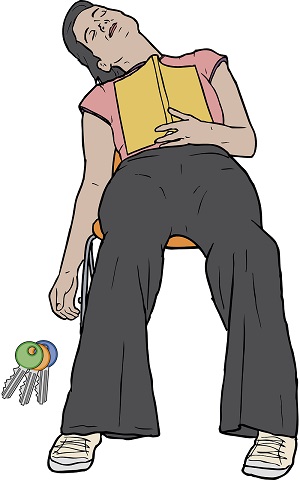
Slumber with a Key
Dali would then enter a brief day-dreaming type of mental state. When the key fell out of his hand and hit the plate, he would open his eyes -- and have the solution. He called this creativity-inducing micro-nap, "slumber with a key."
I have used this method, and it works. Recently, I personally used this method to solve a non-glamorous practical problem of my own. My deep, creative mind provided the answer in amazing fashion.
My problem was this. The sewer pump in my front yard had started leaking water out onto the grass.
Rather than pay a plumber, I decided to see whether I could fix it myself. However, I do not have any experience with such things, and nobody I asked knew what to do either.
The sewer pump is in a tank buried in the yard. I unbolted the lid and observed that a section of pipe seemed to be missing between the pump and the pipe that leads to the street.
After examining situation from every angle for over an hour, and then researching the problem online, I simply could not figure out how a length of pipe could have vanished from inside that enclosed space.
Exasperated and about ready to give up, I decided to give my Creative mode a crack at the problem. I sat down in my easy chair and floated this question in my mind: What is going on with the sewer pump; where did the missing section of pipe go?
Then I just let my mind drift.
I actually did fall asleep for a few minutes (should have put some keys in my hand, I suppose), but upon awakening I immediately knew the solution!

Sudden insight
The pump had come loose from the pipe, and due to water pressure the pump had simply rotated in the barrel. There was absolutely no doubt in my mind about it.
So I went back outside, and sure enough in a few minutes I had turned the pump around and re-attached it to the pipe. Problem solved and repair made, for free.
Whereas my Focus mind was completely stumped, my Creative mind totally figured it out.
By first using Focus mode to gather the facts, followed by Creative mode to subconsciously explore solutions, I solved what seemed to me an "unsolvable" problem, all on my own.
Here's the thing. The answer wasn't really complicated. It was right there in front of me. But my Focus mind, which is dependent on pre-existing patterns, simply could not see it.
Entering Creative Mode While Fully Awake
Now, you may not be able to take a nap every time you want to find the answer to a difficult situation. And you may not have to.
Remember, the purpose of the light nap that Edison and Dali would take wasn't to enter sleep. The purpose was to access a mental state where their mind's normal active "thinking" was turned off, so their creative mind could take over.

Your inner energy field
The spiritual teacher Eckhardt Tolle in his book The Power of Now, describes in his own way how to switch back and forth between Focus mode and Creative mode while fully awake.
"Whenever an answer, a solution, or a creative idea is needed, stop thinking for a moment by focusing attention on your inner energy field. Become aware of the stillness. When you resume thinking, it will be fresh and creative."
"In any thought activity, make it a habit to go back and forth every few minutes or so between thinking and an inner kind of listening, an inner stillness."
Sophy Burnham, in her book The Art of Intuition, provides other ways to access this calm creative state:
Often this mindless state is achieved by quiet, repetitive motions: taking a walk, knitting, cleaning, cooking, ironing, weeding the garden, repairing the roof, sanding your boat. Slowly you enter the restful quietude of "no mind."
In life there are many situations where you know there must be a good answer -- you just can't figure out what it is. The secret to finding solutions for these sorts of problems is to switch back and forth between your brain's two modes of operating, Focus and Creative.
During his Indian retreat Touching the Eternal, Tolle described the method of looking inside yourself for solutions this way:
You will find the answers to most questions... or the solution to any problem, in the Stillness. Take it into the Stillness. And even when you are engaged in thought, trying to solve something, a problem or situation, step back from thought periodically.
Thought has its place. It is more important to step back from thought, and to look. After awhile, thought comes back, perhaps with an insight or solution. Or the problem itself dissolves.
The next time you're stuck on a problem and not able to come up with a solution, try the micro-nap technique or the awake "no mind" method. Pose your question to your mind's deep Creative mode -- you might just be surprised by the insightful answer you receive!
Published: 04/26/2017
Last Updated: 06/11/2020
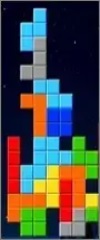
Newest / Popular
Multiplayer
Board Games
Card & Tile
Concentration
Math / Memory
Puzzles A-M
Puzzles N-Z
Time Mgmt
Word Games
- Retro Flash -
Also:
Bubble Pop
• Solitaire
• Tetris
Checkers
• Mahjong Tiles
•Typing
No sign-up or log-in needed. Just go to a game page and start playing! ![]()
Free Printable Puzzles:
Sudoku • Crosswords • Word Search

